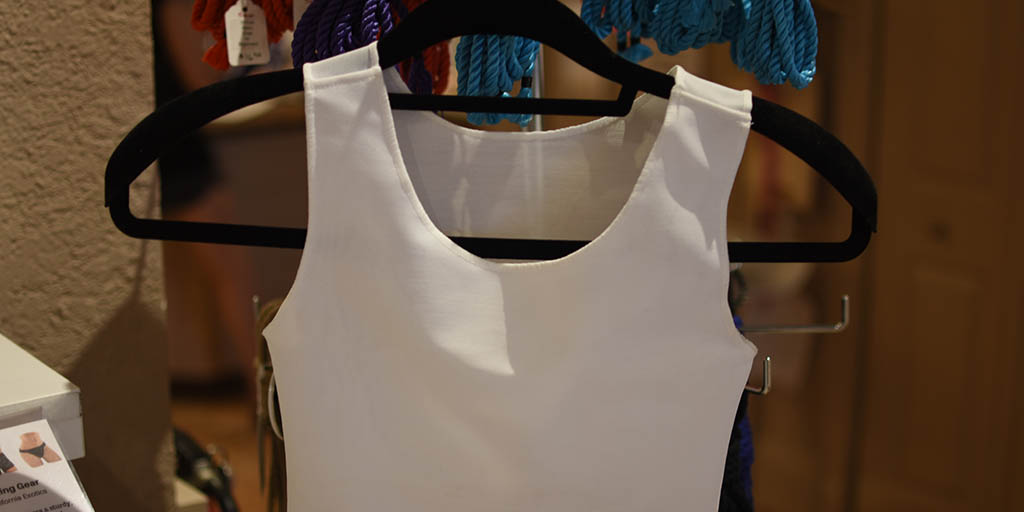Everything you need to know about chest binding safety
 CREDIT: HAYDN ROOTH
CREDIT: HAYDN ROOTHSpot of Delight, located at 426 Richmond St., has a program designed to help those individuals in need of chest binders.
Chest binding is a very common way in which an individual may flatten/compress their breast tissue in order to create a more male-looking chest. Most commonly seen in female to male trans people, chest binding is a safe way to alleviate chest dysphoria when done properly. Cis women will even bind their chests for personal reasons.
Whatever the reason you may be binding your chest for, just keep in mind that your safety is the most important thing. This guide will go over general safety tips when binding your chest, where to buy binders and will highlight a local store that facilitates a binder exchange program.
The golden rule of chest binding is simply, if it hurts, take it off. Caution is extremely important when chest binding as many methods may lead to sweatiness, discomfort, pain and may even restrict breathing. The typical amount of time someone should be binding for is eight to 12 hours, maximum. The less time spent wearing the binder the better, so try not to wear it at home if possible. Never sleep in the binder as it is your body’s time to rest.
Binding for too long can bring forth a whole host of issues, including but not limited to the breaking down of tissue in the breast area, leading to breathing problems, back pain and skin irritation. Another issue to address when dealing with binders is the binder itself.
A professional binder is, of course, the best and safest way to bind. Never use ACE Elastic Bandages, duct tape or any other do-it-yourself binding material. ACE bandages are especially bad because as you breathe the tape constricts making each breath more difficult to take. These are extremely dangerous practices and should not be in use by anyone. When looking for a binder try a larger compression shirt and work down from there.
There are several different styles of chest binders available, but the most popular is the longshirt style, looking almost like a plain white tank top. There is also the mid-length option of this style that reaches the top of your pants or somewhere just above the belly button. These styles are great as they give the full compression without looking like a bra of any kind. The sports bra style is exactly as it sounds and is ideal for those with more active lifestyles. Lastly, the vest binder has Velcro straps (or a zipper) that make taking a binder on and off a lot easier.
Putting on a chest binder is half the challenge. Depending on your chest size you may find one method easier than the other. For people with smaller chests, it has been recommended to step into it almost like putting a long dress on. Pull it up your body and then push your arms through the holes. Positioning your chest is a big problem in the binding community as it is not talked about as much as it should be. For larger chests, it is recommended to gently push down and out when positioning the binder.
A lot of people who want or need chest binders do not have the means of acquiring one. Spot of Delight, located at 426 Richmond St., has a program designed to help those individuals in need of binders. Rachel from Spot of Delight, who preferred not to disclose her last name, spoke with Interrobang about the program and the store’s mission to provide a “body-safe, discreet, and inclusive” service to London.
“We have been able to rehome more than 25 binders, so that’s 25 people that might not have been able to access safer chest-binding and that might have been using unsafe methods,” she said when asked about the program’s success.
Rachel said that the store accepts used and in-functional-condition binders, and when donated the individual will receive a $10 voucher that can be used in-store.
Chest binding can be an empowering practice, if done right. Always make sure to reach out to experts for support before you begin.














